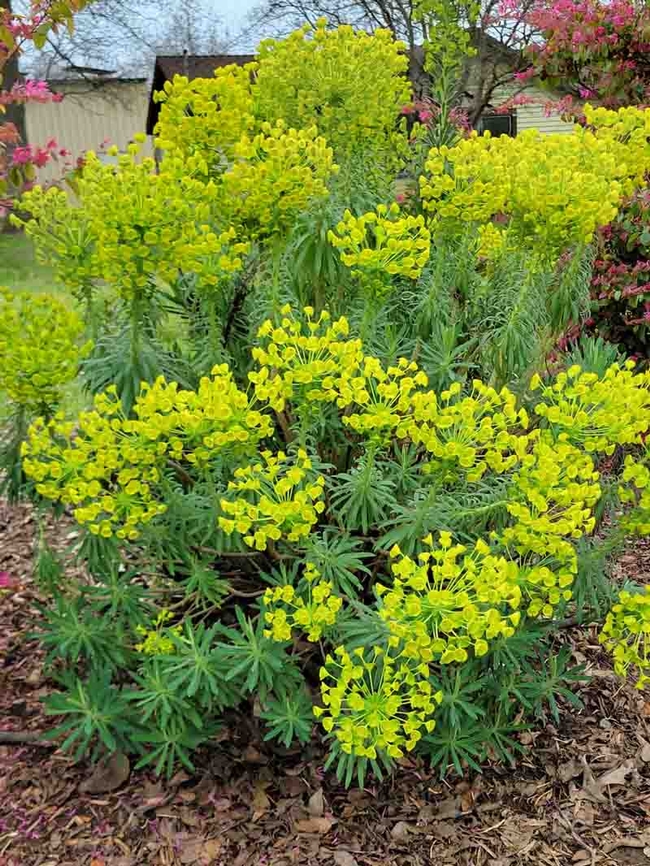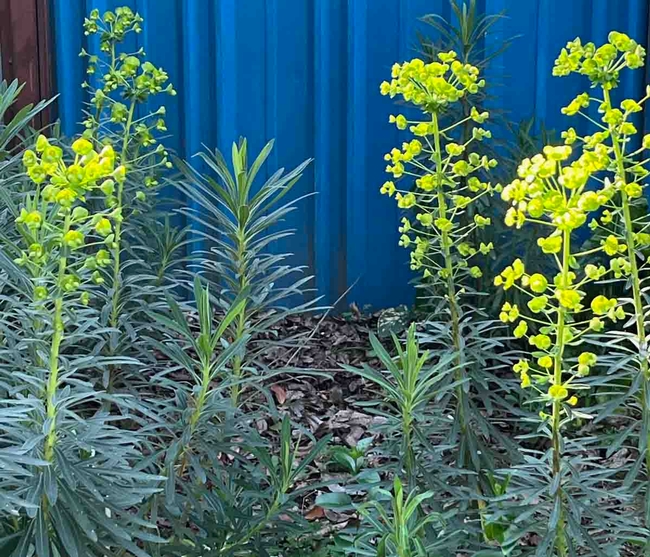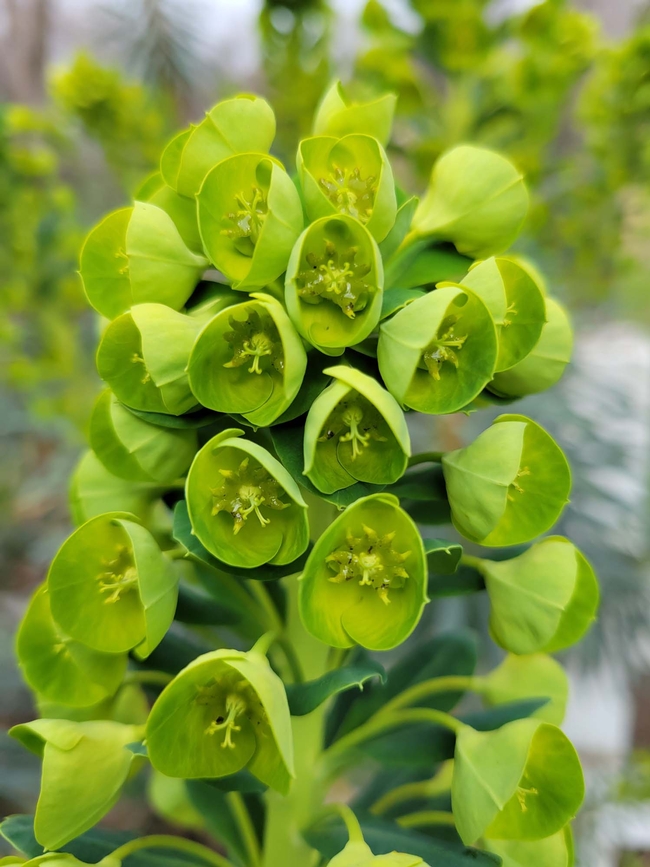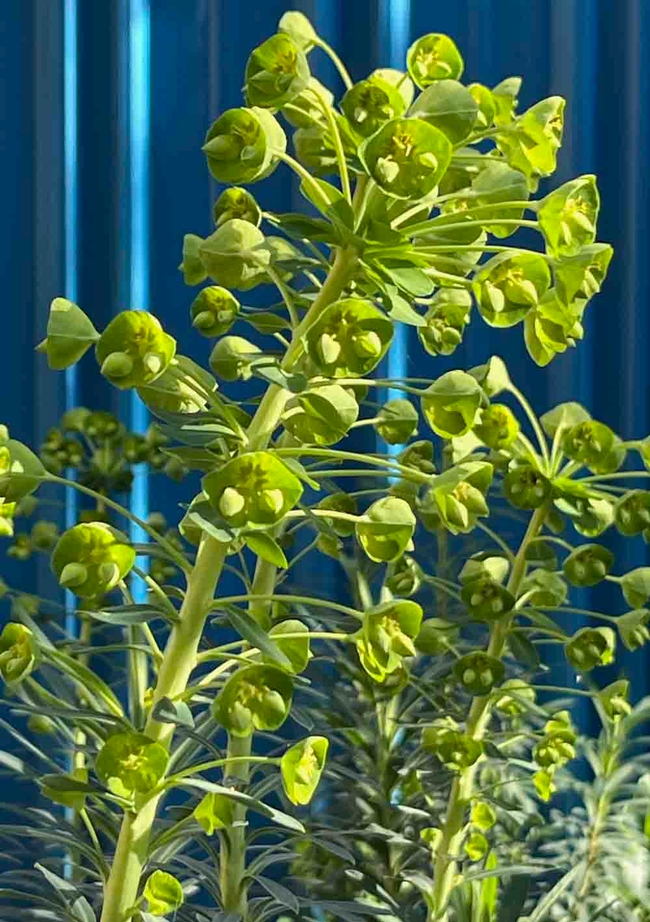Looking for a drought tolerant plant? Euphorbias are one of the most dramatic garden plants, and they happen to do well in our ongoing conditions of drought. The genus is expansive and includes 2000 species of herbaceous perennials, annuals and biennials, as well as evergreen and deciduous shrubs. You might think you are unfamiliar with this plant family, but one tender (and colorful) variety of euphorbia is customarily purchased during the holiday season: the Poinsettia. The poinsettia's red leaves surround a “flower” called a cyathium, which is really a structure that consists of fused bracts that form a cup around the (actual) tiny flowers.

Euphorbia characias is perhaps the most commonly seen euphorbia in our area. The upright stems of this Mediterranean native are crowded with narrow blue-green leaves that form a dome-shaped bush four feet high & wide. Chartreuse or lime green flowers in dense, round to cylindrical clusters appear in late winter and early spring. Characias is very drought resistant and thrives in part to full sun.

Classified as an Evergreen Spurge, the sub-species “Tasmanian Tiger” grows three feet wide and high with bow-tie like flower bracts edged in white. The conical flower heads appear in spring. Prune spent flower heads and stems down to the base of the plant—new ones will form during the summer. This euphorbia provides interest all four seasons in our mild climate.
Euphorbia “Polychroma” is another showy variety that looks especially lovely alongside spring-blooming tulips and other bulbs. It is also known as cushion spurge. Its bright golden flowers sit atop cushion-shaped light green leaves. This versatile plant is useful in edgings, rock gardens and containers. And autumn brings an extra treat: red foliage color. Trim this plant back hard to four inches in early summer to maintain a bushy, compact size.

If your garden is plagued by deer and rabbits, they will avoid euphorbias because the stems of these plants contain milky white sap that can be an irritant to the skin or toxic if ingested. For this reason, it is a good idea to handle euphorbias with gloves to avoid getting the sap on your skin or in your eyes. The sap has a latex base, so it is also good practice to clean your pruners after using them on euphorbias, to help maintain a sharp blade.
Euphorbias make unusually attractive cut flowers that can be incorporated in floral arrangements. To prevent the sap from bleeding, dip the stems in boiling water or seal the stems by holding a flame to them for a few seconds before adding them to an arrangement.

UC Master Gardeners of Butte County are part of the University of California Cooperative Extension (UCCE) system. To learn more about us and our upcoming events, and for help with gardening in our area visit our website. If you have a gardening question or problem, email the Hotline at mgbutte@ucanr.edu or leave a phone message on our Hotline at 530-552-5812. To speak to a Master Gardener about a gardening issue, or to drop by the MG office during Hotline hours, see the most current information on our Ask Us section of our website.